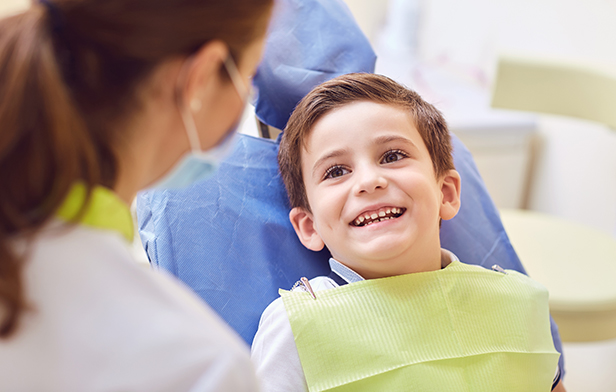What Children’s Dentistry Means
Maintaining a healthy smile begins early, and as children’s teeth, jaws, and smiles grow, some issues can arise that complicate one or more aspects of their oral health development. According to the American Dental Association, children should attend their first dental visit by the time their first tooth appears. If any issues are detected, then we can help preserve your child’s smile with the pediatric dental treatment.
Crooked Teeth
Occlusion describes teeth’s alignment, and how well they fit together when your child’s mouth is closed or at rest. Malocclusion (a crooked bite) usually occurs early in a child’s dental development, and orthodontic braces are commonly prescribed to correct it. Left untreated, an improperly-aligned jawbone or set of teeth can grow continually worse, and might require a complex combination of treatments to correct in adulthood.
Acid Erosion
Erosion describes the gradual wearing-down of a structure, and in the case of dental health, often occurs from the acid that oral bacteria produce. The protecting layer of enamel around teeth, made mostly of minerals, is weakened when bacteria convert sugar into acid. Over time, acid erosion can render teeth vulnerable to infectious germs that lead to cavities (holes that form in infected teeth). If your child’s enamel is weak, then it can be fortified with better hygiene and fluoride treatments at the dentist’s office to prevent the formation of cavities.
Teeth-Grinding
Common in children and adults alike, habitual teeth-grinding is a problem you might not realize you have until your teeth wear down or your jaws grow exhausted. For children, teeth-grinding can wear down and damage their teeth, making them more likely to develop severe tooth infections and occlusal problems. The causes of bruxism vary from case to case, and can include excessive stress and anxiety as well as issues related to your child’s bite alignment.
filed under: Children's Dental Services



